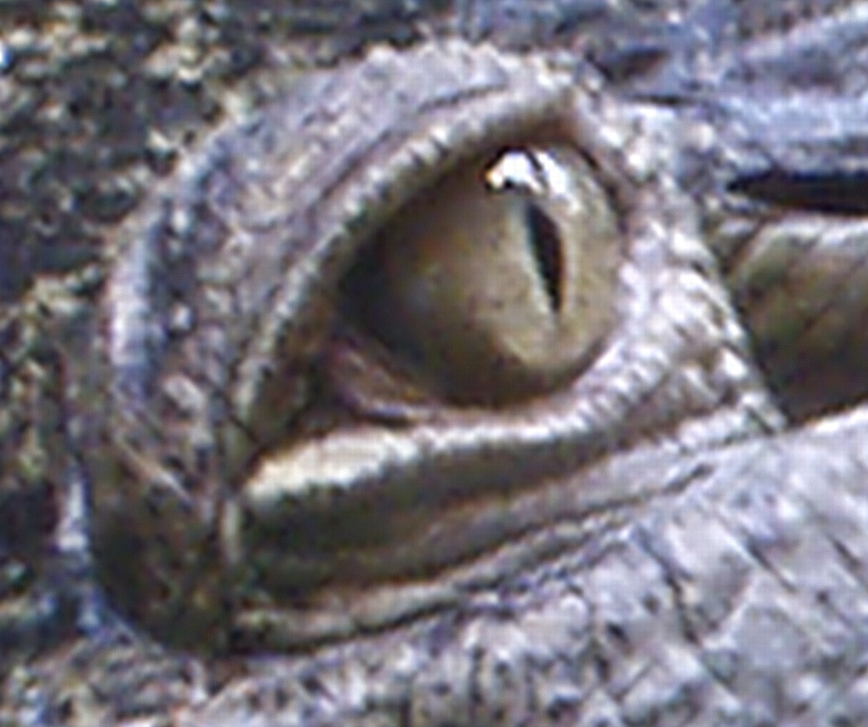
What is photo interpolation / resizing / resampling?
How big can I print my digital photos?
Home | Interpolation Methods | Imaging Services | Screensavers | Feedback
|
What is photo interpolation / resizing / resampling? How big can I print my digital photos?
Home | Interpolation Methods | Imaging Services | Screensavers | Feedback
|
Introduction
Photo interpolation is the process by which the number of pixels comprising an image is increased to allow printing enlargements that are of higher quality than photos that are not interpolated. Interpolation is commonly needed to make quality large prints from digital photos and film-scanned images.
A review of the different digital image interpolation (resizing / resampling) methods can be found by following this (digital photo interpolation methods).
Image Interpolation Described
Interpolation is the process by which a small image is made larger. Software tools stretch the size of the image and generate pixels to fill in the blanks. Interpolated images produce smoother lines and a better large print than if the original, small image was simply printed large.
Image interpolation tools enable low mega pixel count digital camera owners (or small format film camera owners) to print BIG pictures with excellent results.
AmericasWonderlands.com Enlargement Services - Digital Photo Enlargements up to 30x40.
Original Photo (thumbnail)
This sample was enlarged without using any interpolation. Notice the jagged pixel edges.

This sample was interpolated.

Does my image need interpolated?
With any relatively large print, you will likely see better results if the image is interpolated. See below for a more detailed answer.
Do you need to get the most expensive software?
Not necessarily. The test photos in the review are blown up pretty large to highlight differences in the tools which become increasingly more significant as the image is blown up larger and larger.
Viewers are unlikely to notice much difference in interpolation methods given small to moderate increases in size. Differences become more notable at 2x, 3x, 4x etc.
How do I know when I need to interpolate the image to get a good print?
A common publishing standard is to use images that are 300dpi or greater. Large prints that are typically viewed from a distance are sometimes printed at 200dpi with satisfactory results.
Given the 300dpi standard, divide the image's pixel height and width by 300 to yield print size in inches.
For example, the 5 megapixel Olympus c-5050z captures images at a resolution of 2560x1920. Dividing 2560x1920 by the common publishing standard of 300dpi yields a maximum print size of 8.5"x6.4" (2560 / 300 x 1920 / 300).
Prints significantly larger than 8.5x6.4 would likely benefit from interpolation. It really depends on the personal taste of the viewer. An 8x10 image size would be roughly 240dpi which would probably look just fine.
200dpi is often used for prints that will be viewed from a distance.
How does a 5mp (2560x1920) digital image compare with 35mm film?
A drum scanned 35mm slide at 4000 dpi will yield an image that approximately
4000x6000. Most pro labs that print from slides will scan the slides and print
the image file. At 4000dpi, the result is a 24 megapixel file. Quite a bit
more than the 5mp Olympus c-5050z but includes an additional degree of degradation
involved with scanning.
What degree of interpolation is necessary for 10x15 and 20x30 prints given the 5mp example?
If using a resolution of 300dpi and making a 10x15 print, a 3000x4500 would be
needed. For a 20x30 image, 6000x9000 would be needed.
Less dpi is required for
larger prints since they are usually viewed from further away... let's say
200dpi. So, for a 20x30 image at 200dpi we would need an image file that's
4000x6000 (note again: this is the output of a 35mm drum scan).
Ultimately, this would require interpolation of most digital camera images
(including the 2560x1920 c-5050z file) to 6000x4000.
So what's the bottom line? Can I get quality big prints from my digital camera?
Yes! (with the following caveat): it depends on which tool is used, how
much the original image is scaled and the expectations of the user.
400% enlargement seems to be an upper limit for the best tools; but I don't have
a good basis for this other than claims that I've read (yet). User
expectations also vary greatly so this number can be quite flexible.
What's the differences between the tools?
Interpolation algorithms vary from simple methods (nearest neighbor) to complex
fractal mathematics (Genuine Fractals) to everything in between (e.g. photoshop
bicubic, lanczos, s-spline, to combinations
of multiple different types, etc.). The prices also range from free to
$160+.
The choice of tool, depending on your preference, could become a value proposition.
Most photo editing software will include some form of interpolation (e.g. bicubic). It's usually found under the Image>Resize menu of the software.
Interpolation software or a better camera?
Should you get a better camera or interpolation software?
1. what is the maximum print size you want to get of the images?
2. can interpolation software produce satisfactory results at that size?
Only you can answer
these questions.
Understanding your quality threshold can also help determine the maximum available size for prints.
Go to the comparison of the interpolation tools
Site material copyright 2003 K. Venator
All rights reserved.
AmericasWonderlands.comTM, America's WonderlandsTM